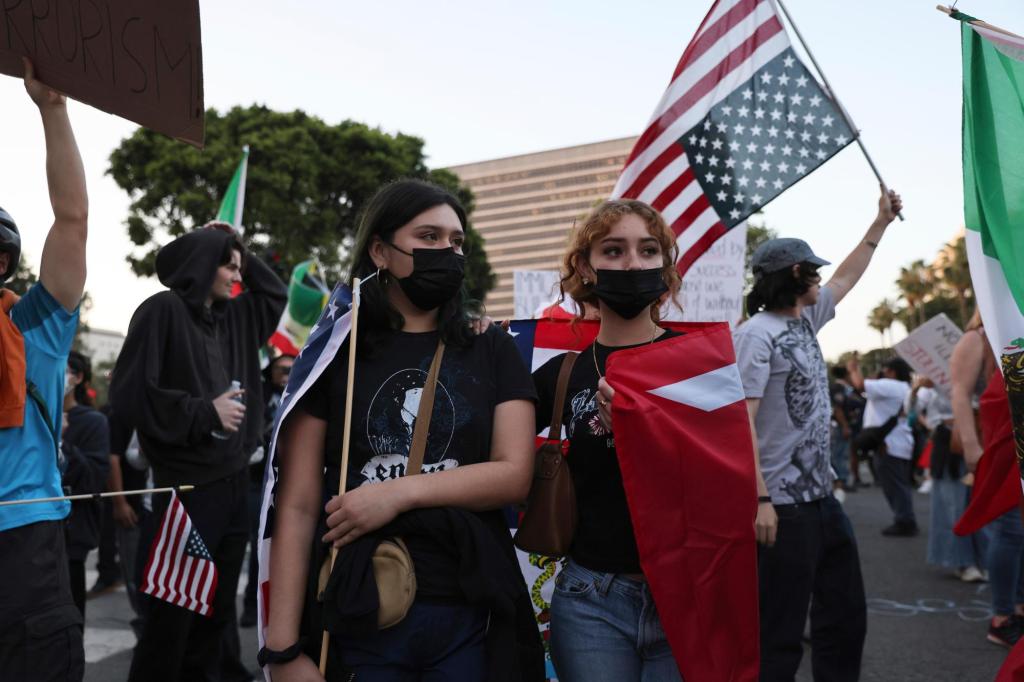Twenty-one years ago, Tyson’s Foods and Perdue Farms closed several plants. New Yorkers formed human chains and forced small stores to close their businesses. Hundreds of thousands took over the streets of Chicago. On May 1, 2006, “A Day Without an Immigrant” led millions of Americans to participate in one of the largest civil rights protests in a generation. Dozens of immigrant rights groups organized these nationwide boycotts and demonstrations on International Workers’ Day. They were sparked by opposition to H.R. 4437, a bill seeking harsher penalties for undocumented immigrants and those giving them assistance. Like the 2020 George Floyd and #BlackLivesMatter protests, “A Day Without an Immigrant” shut down streets and workplaces.
Though largely forgotten today, the protests marked a significant moment in the fight for immigrant rights. H.R. 4437 was defeated in the Senate. In the following years, immigrant rights advocates helped develop DACA with the Obama administration, protecting minors brought to the U.S. from deportation and allowing them to live, study, and work legally.
Seeing current ICE protests has forced me to recall my participation in those May 1 marches as well as my research as a UCLA Ph.D. student. In 2007, I worked with Ruth Milkman, Victor Narro, Joshua Bloom and a team of researchers to study labor organizing among low-wage workers in Los Angeles. With input from immigrant rights organizers, I published a study of the Multi-ethnic Immigrant Worker Organizing Network (MIWON). I examined how MIWON worked with the Coalition for Humane Immigrant Rights of Los Angeles and several L.A. worker centers to organize May 1 marches since 2000.
In my in-depth interviews with activists, they shared strategies they had gleaned through several years in the fight for immigrant rights. Unlike in previous L.A. marches, in 2006 protesters wore matching white T-shirts, waved American flags and held signs saying things like “Full Rights for All Immigrants.” While there were also a few Mexican and Guatemalan flags, the overwhelming majority were red, white and blue. MIWON organizers mentioned intentionally moving away from home country flags after realizing it limited empathy from and solidarity with non-immigrants.
While honoring one’s heritage remained important, displaying U.S. flags symbolized that immigrants are part of the American social fabric. By asserting their free speech and rights to assembly, they demonstrated their commitment to American values and the democratic process, asserting they are Americans in spirit, even if not yet on paper.
Collaborating with Black organizations, immigrant rights activists recognized that framing immigrants as “hard-working” could be divisive. This perspective overlooks how capitalist employers purposely recruit undocumented immigrants to avoid following laws regarding the minimum wage and overtime pay, while too often stealing immigrant workers’ wages and placing them in hazardous work conditions. Decades of research show that employers underpay everyone from H-1B visa holders from Kerala or Lima to travelers overstaying their visa from Tegucigalpa or Fuzhou. Much like the use of prison labor, this systemic labor exploitation allows the wealthy to enjoy larger profit margins while pitting immigrants against native-born workers. The threat of deportation prevents workers from organizing for their rights as laborers.
Successful advocacy emphasized unauthorized immigrants as integral community members — neighbors, coworkers and taxpayers — whose presence benefits all Americans. Across the country, Americans rely on “illegal” immigrants’ taxes to fund everything from Social Security to maintaining our roads and schools. One Harvard study showed that between 2000 and 2011, unauthorized immigrants contributed $2.2 to $3.8 billion into Medicare more than they withdrew annually. An exodus of millions of undocumented immigrants and their families would devastate our communities. In cities like Los Angeles, where Latino and Black communities are deeply intertwined, this inclusive framing helped build solidarity.
The 2006 boycotts and protests highlighted unauthorized immigrants’ essential role in American society. Despite their contributions, immigrants face boundaries to citizenship as well as ongoing threats of deportation — often due to corporate interests benefiting from exploiting vulnerable workers. The current ramping up of mass deportations threatens not just immigrants, but broader American democratic values. To resist effectively today, immigration rights activists must draw from the proven strategies of past civil rights and labor struggles to maintain unity and democracy.
Chinyere Osuji is an associate professor at the University of Maryland and the author of “Boundaries of Love: Interracial Marriage and the Meaning of Race.”
